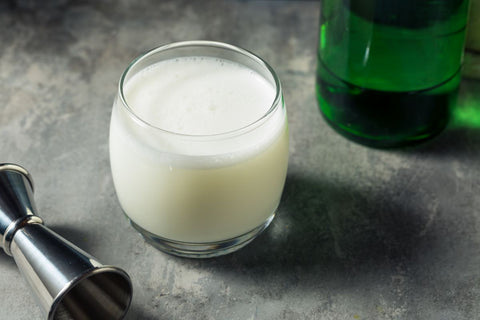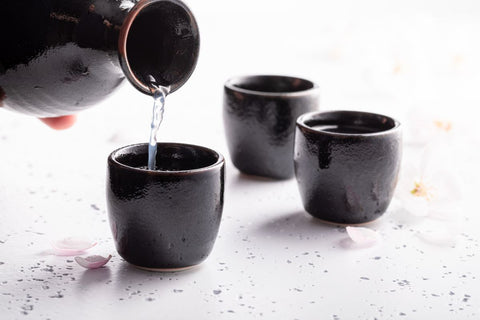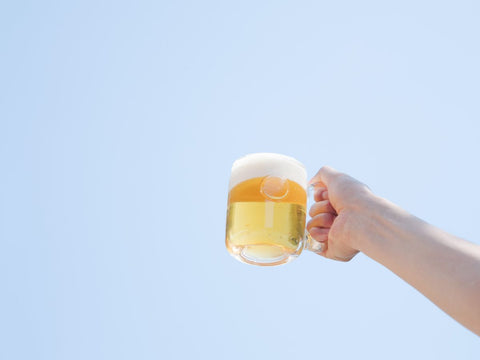What’s the difference between soju, shochu, and sake?
- Soju is a clear spirit that originates in Korea.
- Shochu is a Japanese drink commonly made from sweet potato, barley, or rice.
- Sake is made with steeped grain, brewed, and fermented twice.
Asian spirits have been gaining popularity over the past few decades, so it’s only natural that you might have heard the words soju, shochu, and sake in casual drinking conversations.
In this article, we’ll get to know the different Asian drinks and understand what makes each of them unique. But we won’t go into a soju vs. shochu vs. sake debate because, here at Ralph’s, we believe that every drink deserves a spot at the table.
Let’s dive in to better know each of these Asian spirits.
Soju is a Clear Spirit that Originates in Korea

Let’s get one thing straight, first and foremost: among the three Asian drinks we mentioned, only one is from Korea. The similarity in pronunciation to Japan’s shochu is because they actually mean the same thing in their respective languages: burned liquor. This refers to the traditional use of fire in the distillation process.
Today, soju is the world’s top-selling liquor by volume. It’s traditionally made with rice, but ever since distilling rice was banned during the Korean War, it’s been made with other grains and starches. This is what gives different brands and types of soju equally varied aromas and flavors.
It’s often drunk on its own with food, similar to wine, and it isn’t often mixed with other flavored drinks or liquors (the keyword here being “often,” as there’s no hard rule about not including it in cocktails or the like). The neutral flavor of soju is reminiscent of vodka, but it has only half the alcohol content, typically somewhere between 20 and 34 percent ABV.
Shochu is a Japanese Drink Commonly Made from Sweet Potato, Barley, or Rice

While sake (see below) is considered the national drink of Japan, shochu isn’t far off the list when it comes to traditional Japanese spirits. Having originated in Japan about 500 years ago, shochu’s flavor and quality can vary greatly depending on the ingredients it’s made with.
Top-quality shochu is called honkaku shochu and is distilled only once, a process that allows the flavors of its base ingredient to be retained. Thus, the taste of the shochu will largely depend on that base ingredient.
As mentioned, shochu shares certain characteristics with Korean soju, including pronunciation and a similarly low ABV. Shochu is most often consumed on the rocks, mixed with hot or cold water, or with fresh juice—all of which lower its ABV further to about 12 to 15 percent. It can also be used to substitute for other liquors in certain classic cocktails.
For a luxurious and rich-tasting shochu, try the Hakkaisan Yoroshiku Senman Arubeshi Kasutori Shochu. It’s been matured for over three years, giving it a good combination of rich and mellow tastes as well as a characteristic aroma. Treat yourself by indulging in a glass or two!
Sake is Made with Steeped Grain, Brewed, and Fermented Twice

Finally, let’s talk about sake. There should be no confusion regarding this drink—it’s not rice wine, it’s not vodka, and it’s not a distilled spirit at all. In fact, sake has more in common with beer, from its steeped grain ingredient to its process of being brewed and fermented with yeast. Sake, however, undergoes a second fermentation using koji mold, which is a kind of fungus.
Sake can range from bitter to sweet, and this dryness is measured by the numerical Sake Meter Value (SMV). That’s why you often see a number from -15 to +15 on sake menus or bottle labels. It’s usually clear and still, but there is such a thing as unfiltered sake, which is milky, and even carbonated sake, which is bubbly.
There are no strict rules when it comes to sake—with the number of varieties it has and the many factors that affect its taste, you can taste something new every time you experiment with its temperatures, storage, and even serving methods.
For a bottle to share with a group of friends, you can’t go wrong with the Dassai 45 Junmai Daiginjo. It’s one of our best-loved sakes, with its flavorful mouthfeel, smooth texture, and refreshing finish.
Key Takeaway
We hope this article on soju vs. shochu vs. sake cleared up any confusion regarding the three Asian spirits. It’s a good idea to get to know these three, because Asian liquors are on the rise, and you’re missing out on a lot if you don’t give them a chance. If you’re interested in alcoholic beverages at all, expect to find these on your radar soon, if they haven’t come up already!
For more Japanese liquor recommendations, check out our sake and shochu collections on our online store. We are the top supplier of sake in the Philippines, and we never run out of good liquor options to entice your guests and keep you sated. Check out our online store today!



